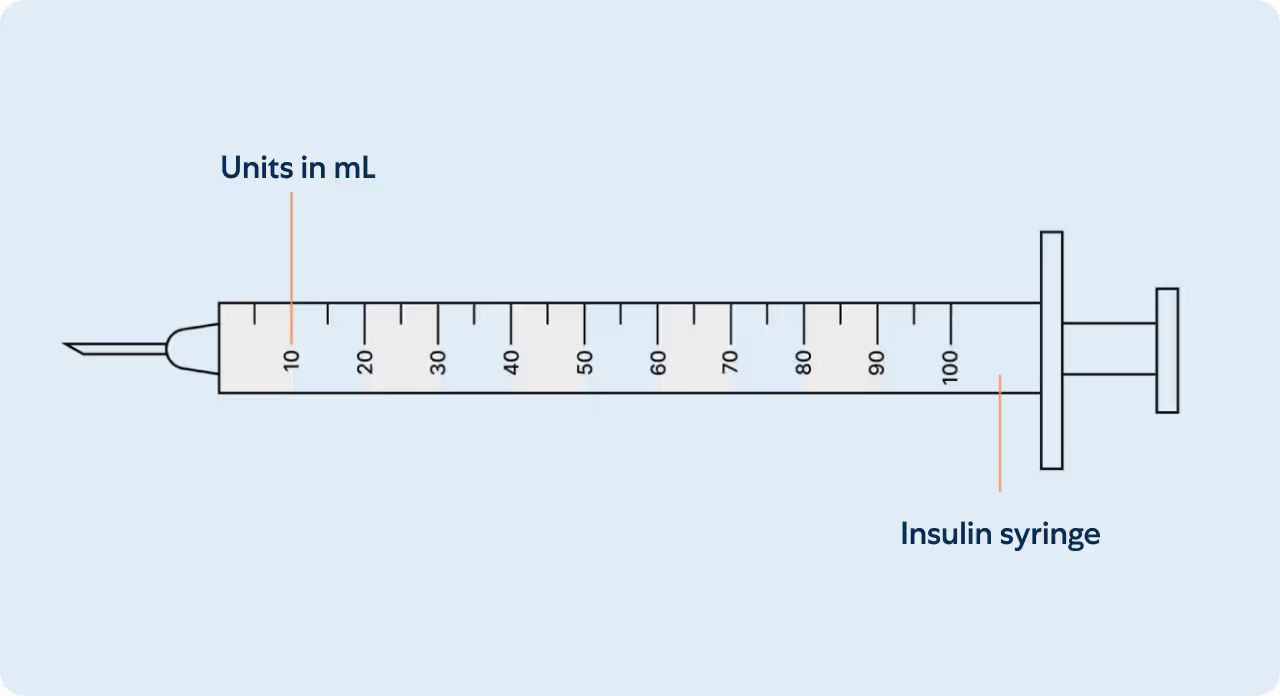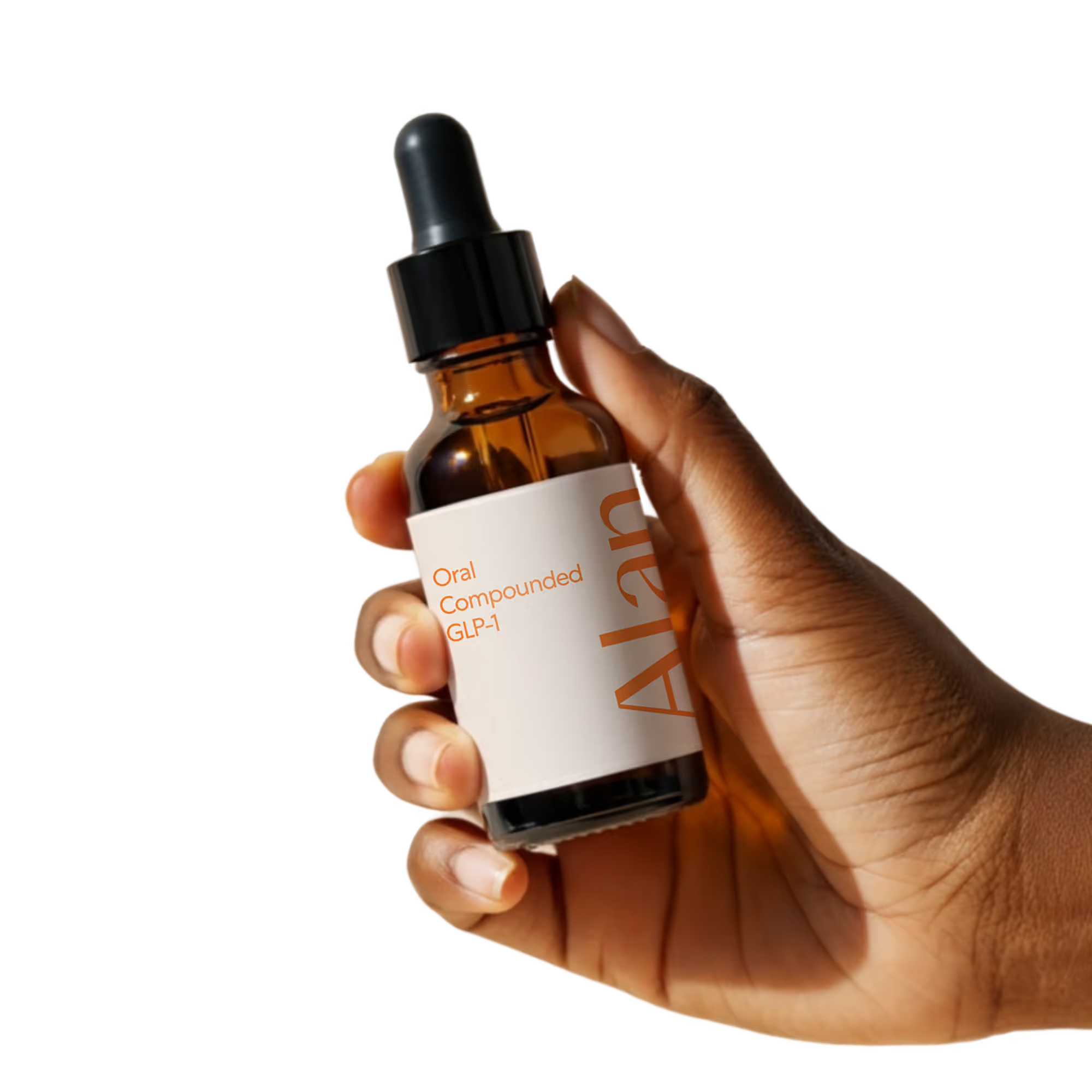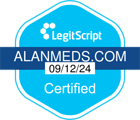Storage
Your Oral Compounded Semaglutide is stable at room temperature. To preserve its quality, store your vial(s) between 68°F and 77°F, away from heat, direct sunlight, and out of reach of children and pets.
When your order arrives, check the vial temperature by gently placing the back of your hand against the bottle. If it feels hot to the touch, contact us right away.
You may safely travel with Oral Compounded GLP-1 Drops, so long as the above conditions are met. While stable at room temperature, please store this medication with the same care you would any prescription.
Instructions
The information presented here is only applicable for individuals who have been prescribed Oral Compounded GLP-1 after their Alan Health prescriber deemed it appropriate.
Quick tips
Here are some simple steps to help you get the most from each dose:
- Try taking your dose 30 minutes before your first meal of the day
- For the best results, take on an empty stomach
- Drink water before taking your dose
- Let the medication sit under your tongue for for at least 90 seconds before swallowing
- Do not eat anything for at least 30 minutes after taking your dose
Follow these tips to ensure that Oral Compounded GLP-1 is properly absorbed, so you can experience the best possible benefits while minimizing side effects.
How to Take Your Oral Compounded Semaglutide
- Prepare Your Bottle and Syringe: Unscrew the cap on your prescription bottle and firmly attach the seal adapter to the top. Once it’s in place, reseal the cap and shake the bottle well to mix the solution. Make sure your oral syringe is clean and dry before drawing your dose.
- Draw Your Dose: Insert the syringe tip into the adapter, then flip the bottle and syringe upside down while holding them together. Slowly pull back the plunger to draw your prescribed amount. Check that the black plunger line aligns precisely with the correct mL marking. If air bubbles are present, tap the syringe gently and push the air out before redrawing the dose if needed.
- Measure Carefully: Use the markings on the syringe to confirm your dose—most syringes are marked in 0.1 mL increments. Align the top of the black plunger stopper with your prescribed dose, and double-check for accuracy.
- Administer the Medication: Place the syringe tip under your tongue and slowly press the plunger to release the medication. Hold the medication under your tongue for at least 90 seconds without swallowing. This helps your body absorb it effectively through the tissue under your tongue. Swallow any remaining liquid after the hold time.
- After You Take It: To ensure the best results, avoid eating or drinking anything for at least 30 minutes. For additional information or questions about your treatment plan, visit your Alan Health Portal.
Understanding your insulin syringe

Measuring your dose
Insulin syringes are used for subcutaneous injections. They are marked in Units on the insulin syringe barrel (see illustration). Insulin syringes facilitate the precise measurement of tiny amounts of liquids which are ideal for medications such as insulin that require small and accurate dosing. Unit marks are also expressed in mL’s and can be interchangeably referenced. A prescriber may write a prescription in Units or in mL’s.
Within the amount of liquid is the prescribed mg dosage of your medication (see mg chart). Milligrams (mg) is not an amount of liquid, but rather the amount of drug that is within. The conversion between units and milligrams varies depending on the concentration of the product being used.
What can I expect?
Safety information
The most common side effects include nausea, vomiting, diarrhea, and abdominal pain.
In rare cases, side effects include pancreatitis and kidney injury. Seek immediate medical care if these occur.
A full list of side effects can be found here.
Do not use this product if you are currently pregnant, breastfeeding, or plan to become pregnant or breastfeed without consulting a qualified healthcare provider.
Note: The above statements have not been evaluated by the Food and Drug Administration. This product is not intended to diagnose, treat, cure, or prevent any disease.
Frequently Asked Questions
How do Oral Compounded GLP-1 drops work?
These drops deliver GLP-1 under your tongue (sublingually), using a specialized base that helps it absorb through the lining of your mouth instead of your stomach. This lets your body access the medication without needing a shot.
What’s the best way to take them for maximum absorption?
Take your dose on an empty stomach—ideally 30 minutes before eating or drinking anything except water. Hold the drops under your tongue for at least 90 seconds before swallowing. The longer, the better.
How long before I see weight loss results?
Most patients start seeing changes within 8–12 weeks, with more noticeable weight loss at 3–6 months. Like all GLP-1 medications, GLP-1 works best over time and alongside healthy habits.
Are oral drops as effective as GLP-1 injections?
The drops can be effective, but absorption is lower than injectable forms. Your provider will adjust your dose based on your progress. Some people may need higher doses or alternative delivery methods to meet their goals.
What should I do if I miss a dose?
Skip it and resume your normal schedule the next day. Don’t double up to make up for a missed dose.
Can I eat or drink water right after taking the drops?
It’s best to wait at least 30 minutes after dosing before eating or drinking anything besides the water you used to swallow the medication. This helps your body absorb it more effectively.
When is the best time to take it?
First thing in the morning, ideally 30 minutes before your first meal. This builds a consistent routine and improves how well your body absorbs the medication.
How often should I take it?
Once daily, unless your provider gives different instructions. Try to take it at the same time each day to keep your levels steady.
What side effects should I expect?
Common side effects include nausea, bloating, constipation, or upset stomach—especially as your dose increases. These usually improve as your body adjusts. Contact your provider if symptoms persist.
How does this compare to tablet versions of GLP-1?
Oral drops may be easier for some people to take and start working more quickly under the tongue compared to tablet forms that must travel through the digestive system. Your provider can help determine what works best for you.
Is this as effective as GLP-1 injections?
Oral Compounded GLP-1 may be less efficiently absorbed than injections, but it can still be highly effective when taken daily and correctly. Your provider will monitor your response and adjust your dose as needed.
Can I travel with my drops?
Yes—keep the bottle at room temperature (68°F–77°F). For hot weather travel, consider storing in a temperature-controlled pouch.
Additional support
For details about your medication and dosing, please log in to your patient portal. Your physician is here to help with any medical questions. If you are experiencing a medical emergency, call 911 right away.













